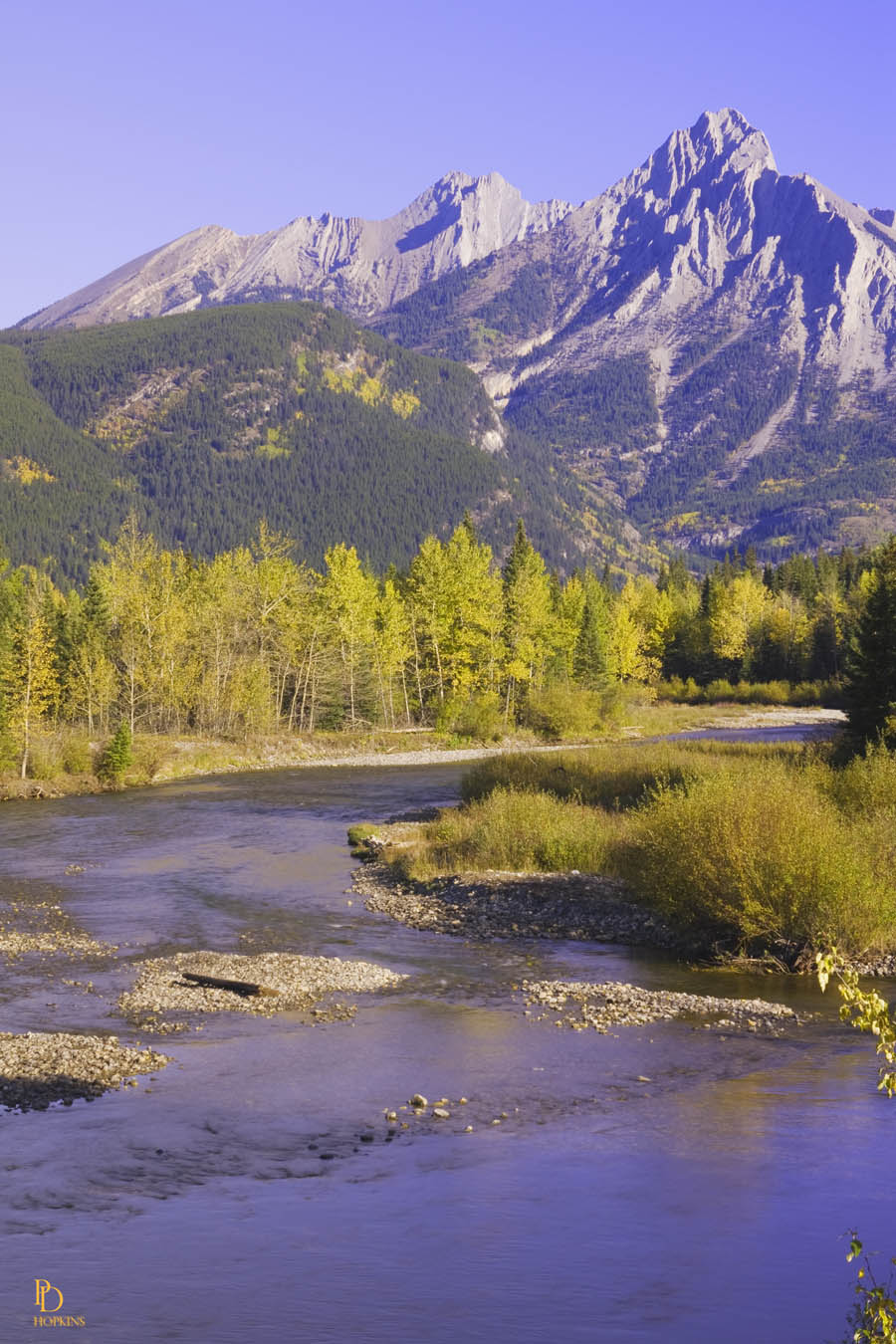Or, perhaps I should say the dreaded blue-gold polarizer. I’m talking about a polarizing filter used on a camera lens that works much like polarizing sunglasses. A polarizing filter generally does two things, it cuts glare (useful when photographing water or snow in bright sunlight) and it saturates or intensifies colours. The blue-gold polarizer is designed specifically to emphasize blues and golds. Here’s how Singh-Ray, a supplier of blue-gold polarizing filters describes it’s product:
Here is the “secret weapon” of many pro outdoor photographers, now available to you from Singh-Ray. The Gold-N-Blue polarizer gives you the ability to add a touch of gold or blue hues to many scenes –even when the light is less than dramatic. Just rotate the Gold-N-Blue Polarizer to see the change from golden yellows to dramatic blue tones, even without strong direct sunlight. Then just choose the image that suits your taste. Get exciting effects and moods without going “too far.”
It sounds pretty easy but as I have discovered, the system is very sensitive to the position of the rotating element. The change of colours that occurs with the slightest amount of rotation can be very dramatic, not necessarily in a good way. What I like to accomplish is the addition of subtle, blue and gold highlights to a scene. I have had mixed success, mostly not very good. Consequently, I don’t use it often.
My friend, Howie and I did have a particularly good experience on a trip to Kananaskis Country in September 2009 to photograph autumn colours. It was a bright, sunlit day and by positioning ourselves carefully with the direction of the light we both got good results.
This first photo is not here because I like it, but rather to illustrate the effect of the filter’s rotating element being a little off from what I would consider optimal.

The highlighting of blue and gold hues in this shot is not very subtle. The blue and gold effects are most evident in the waters of the Kananaskis River. The blues are almost purplish and the reflections of the yellow bushes are good. This lower area of the photo looks not bad. Regrettably, the overall image has a bluish to purplish cast to it and in my opinion it’s not that appealing.
The next two shots were taken in the opposite direction and I had dialled in a better mix of blue and golds than I achieved in the picture above.

The purplish cast is gone and the overall image is more appealing to me. The effect on the yellow leaves is very obvious and if you look closely at the water in areas around the stones you can see subtle, gold highlights. The filter has darkened the water, particularly at the bottom of the photo to a colour best described as “ink blue”.

I took this shot facing southward from the bridge at the Mt Allan turnoff. This is the Kananaskis River and you can see Mount James Walker in the distance. Again, the effect of the filter on yellow leaves is pretty apparent. You can also see enhanced gold highlights in the water in the lower left of the photo and again in areas around the stones on the riverbed. In the foreground you can see the deep blues again, particularly where there is shadowing on the ripples.
Enough of that, hope you like the photos.

Interesting effects! Why in the last shot (Kananaskis River (Blue and Gold)) are the blues in the sky and mountains not effected in the same way the water is? My use of polarized sunglasses appears to darken the sky. Or does the blue filter only effect the lower portion of the photo?